28 Jun 30 Chess Openings Named After Famous Chess Players

Imagine sitting with an opponent before the game and saying you are almost tempted to play a Ruy López against their Berlin Defense. Believe me, your opponent will smell the superiority you hold over his knowledge from far away.
While you bask in the glory of outwitting them and gaining a psychological advantage, we would like to share some interesting, and some legendary reasons why chess openings got their unique names.
From dinner table conversations to casual brainstorming with the chess community, check the list of chess openings and admire the men who defined chess with their incredible contribution to the game.
What are Chess Openings?
Chess Openings or your opening moves in Chess have defined several aspects of this interesting mind game. They help in setting up the stage for a player, and can also change the perception about his chess skills. Openings have always been a widely discussed and much debated topic in the recorded history of chess.
Why should you know about Chess Openings?
For those seeking an intellectual upper hand using not just their chess moves but also with their extensive knowledge about chess, we bring here a list of chess openings that could do that for you! From mavericks, to masters, clever to crafty and conniving, you will find a lot of similarities and dissimilarities in these famous chess personalities. The single thread that keeps them all together is Chess!
Once you have gone through this, we are sure you will be as fascinated with the stories as we were in compiling them and find answers to questions like:
- What did Tarrasch say to offend Nimzowitsch?
- Why did Benko denounced his candidate’s play?
- What made Najdorf come up with Najdorf Variation?
- Did Schliemann really have to do something with Jaenisch Gambit?
- What was Morphy’s role in Morphy’s Defense?
- Wasn’t chess the first “Gentleman’s game?”
Ruy López (aka The Spanish Opening)
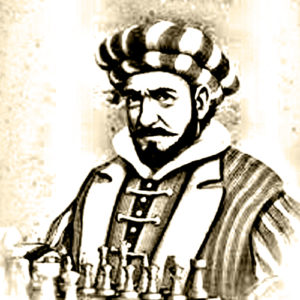
Ruy López de Segura
A 16th century priest in Spain, who aptly rose to the title of “Bishop” later in his life is behind one of the most discussed opening moves in Chess history. Some of the oldest recorded games are attributed to Lopez and his sparring partner, Giovanni Leonardo Di Bona from Italy.
The story goes like this:
Lopez was so bored of a popular chess book in his times that he resolved to write a better manual for chess. The book he came up with was the book of the liberal invention and art of the game of chess- Libro de la invencion liberal y arte del juego del axedrez.
Apart from the fact that this was one of the first chess books to be written and published, it also covers the rules prevalent at that time, and are even used today. The highlight, though, is that it famously proposed that the stalemate situation should have a winner – the player who is not stalemated and not a draw. Something many of us would like to be reintroduced as a rule!
The book is the reason why we call the above moves Ruy López. Today we know that 3. Bb5 is certainly not a refutation of 2. …Nc6 and Ruy López is certainly playable by Black. But back then, his theory was one of the trail blazers of opening theories, and hence he got the name.
Philidor Defense
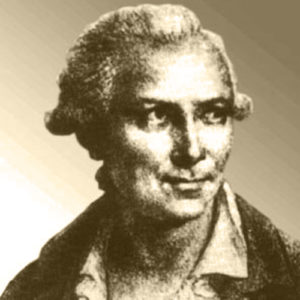
François-André Danican Philidor
François-André Danican Philidor was as much a great chess player as he was Europe’s leading and prolific Opera Composer.
His book Analyse du jeu des Échecs was considered a standard chess manual for at least a century. He is probably the only player who has both an opening and a checkmate named after him. When Philidor recommended this little move 2…d6 for black, developing the second pawn to defend the first was considered to be a boring way to start since most players in the 18th century thought pawns were irrelevant.
Philidor, on the other hand, proved that “Pawns are the soul of chess” and they formed the base of his opening moves and why wasting them just because they outnumber instead of making them work as a team was a bad idea. Philidor believed that the disdain for “lowly pawn” was a reflection on the human society where common man was relegated to backstage instead of claiming their rightful place in the society and acknowledging their contribution.
Many don’t know that Philidor sparred with Benjamin Franklin, one of the founding fathers of America and also an avid chess player himself. It is Philidor’s stress on the strength of the common pawn that ignited the idea of “Enlightenment”- the notion that the common man was worthy of more than what was attributed to him by the monarchy, aristocracy, and church.
The Enlightenment that Philidor was a part of along with his contemporaries- Voltaire, Rousseau and Franklin, was the soul of the French Revolution as well as the American Declaration of Independence, the first small, but significant step towards civil rights and equality.
Evans Gambit

William Davies Evans
Till the early 18th century, the Nobility and the privileged class were the only ones who had the luxury of indulging in the Royal Game of Chess. Hence, most of the moves and strategies are named after the upper-class people who proposed them.
Evans Gambit stands out as an exception.
Evans became a sailor at an early age, having given the maximum support they could afford for his education by his family. Eventually, he became the captain of a Post Office steamship that made hundreds of trips between Wales and Ireland. During these trips, Evans took up chess to kill the long hours of solitude. The stunning move from white can shake an unsuspecting black out of their opening slumber at 4. b4 and white can quickly ride its way to control the center with 6. d4 .
Captain Evans played his gambit against the reigning British Chess Champion- Alexander McDonnell, defeating him in just 20 moves. Evans Gambit not just turned the opening strategies of his time over their royal, privileged heads, he was also the first known “commoner” to get lasting fame in the game.
Petrov’s Defense
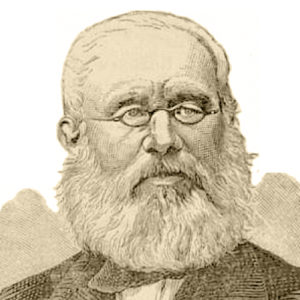
Alexander Petrov
One of the first great Russian Chess Masters, Alexander Petrov started playing at an early age of 4 years and went on to dominate Russian Chess for almost 50 years. Petrov came up with 2…Nf6 as an option for black. It may look like a simple exchange of e-pawns but that’s totally deceptive. If white captures with 3. Nx5, an inexperienced Black player could land the black queen in spot in just two more moves that work in favor of white.
The game would look like the above.
It might sound a bit dull and predictable but for rookies, the Petrov’s Defense rather works as it forces both the sides to spring into action rather than missteps.
Schliemann-Jaenisch Gambit
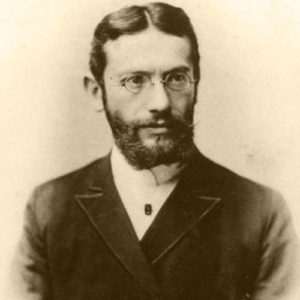
Schliemann
This opening is widely referred to as Schliemann Defense, Jaenisch Gambit or Schliemann- Jaenisch Gambit to attribute it to both men. The surprising facto about it is that the two players developed this opening theory 10 years apart. It was Carl Janeisch who was playing this gambit at top levels long before the lawyer Schliemann adopted and popularized the idea.
A tormentor of the white’s rhythm, many Ruy Lopez lovers were not aware of this gambit and were caught unprepared, going after the offered pawn. The mistook the offering as a naturally accepted move in reversed King’s Gambit, just that it was not, and it dragged the white into an incredibly complicated situation right in the opening game.
An army engineer, mathematician and chess player, Jaenisch has written several books and though his career was not as stellar, he managed to impress his way into permanent glory with this opening gambit.
Falkbeer Countergambit

Ernst Falkbeer
Ernst Falkbeer was originally from Austria, and he developed this countergambit as an answer to the German legend Adolf Anderssen’s King’s Gambit. The romantic era of chess when Falkbeer tried the move 2…. d5 was the era when declining a King’s Gambit was considered “ungentlemanly”, cowardly even.
You were expected to behave in lines with the decorum and prove you had class by accepting the King’s Gambit on your chin, or face, for that matter. However, instead of declining and risking his social status the smart Falkbeer offered a countergambit to prove he is as chivalrous as they come. 3. exd5 will often be followed by 3….c6, inviting 4. dxc6 Nxc6, a move that results in White being a pawn up and behind in development- an exact opposite result of a King’s Gambit outcome.
Falkbeer’s countergambit derives fun from the hunter becoming the hunted, and is often used by players facing a King’s Gambit.
Staunton Gambit
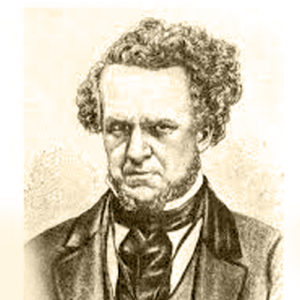
Howard Staunton
2.e4 is a very strong comeback move against the Dutch Defense. Howard Staunton was the knight in shining armor of British chess spearheading the British rivalry with the French over the chess board.
An ardent chess observer, he grew up with the imagery of countryman Alexander McDonnell losing out to French Louis-Charles Mahé de La Bourdonnais over a long series of matches and went on to bring the lost glory to his nation by beating Frenchman Pierre Charles Fournier de Saint- Amant and was generally regarded as world’s best chess player in his time. Staunton won a famous game against the German master; Bernard Horwitz using this gambit and immortalized the move in chess history.
Deceptive in its looks, the black may be offered an undefended pawn here, but it is only a bait. Before Black recovers from this deception, there would have been several moves to be played to reach safety.
Staunton is also famous for being a sore loser, calling Anderssen the “Second Best German player” on his face, and standardizing the shapes of chess pieces, a credit that he lapped up owing to his stature. More famously, he is notorious for inviting and then making the American legend Paul Morphy chase him around Europe, only to be declined in the most contentious, somewhat unethical way of excusing himself on health grounds.
The double-edged nature of Staunton’s Gambit thus matches the dual personality of brilliant, but often condescending and conniving master, Staunton.
Anderssen’s Opening
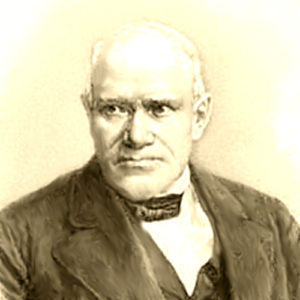
Anderssen
This is as fringe a pawn opening as it can get. (Probably not!). It is deceptively simple as it gives away nothing. There is no perceivable threat and obviously the centre is a far way to the right when white opens with this move.
The Chess Legend who had the most famous “The Immortal Game” against Lionel Kieseritzky to his credit where he immerged triumphant to his credit, developed this move while challenging the visiting American chess stalwart Paul Morphy.
Smarted already by Howard’s Staunton’s deception off the chess board, Morphy was nothing but surprised with this waste of an opening move starting as white from the European. Still, Anderssen managed to get 11/2 out of 3 games he played with this move. Not bad, considering the rest of the matches were a total washout for him.
Morphy’s Defense

Anderssen
Maverick American Chess player Paul Morphy is revered by many a Grandmasters of today. In his time, he posed a serious threat to every challenger across the American and European continents. He singlehandedly crushed and obliterated every player that cross his path. 3…. a6 means that the White Bishop must either retreat or capture the black knight it threatens.
Though named after the legend, this opening has little to do with Morphy himself, since he neither endorsed it nor adopted it as a signature move. However, one of his widely analyzed games had the author pointing it out as Morphy’s Defense, and the term just got picked up. In truth, this move may have been a staple of many players before Morphy.
Caro – Kann Defense
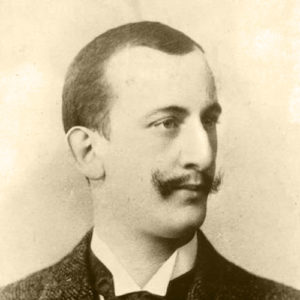
Horatio Caro
Named after two relatively low-profile chess players, Englishman Horatio Caro and Austrian-Hungarian Marcus Kann, the defense was the high point in Marcus Kann’s career’s most famous victory in just 17 moves against Jacques Mieses at the 1885 German Chess Congress. Later, Caro and Kann collaborated on this move and got it formally published in the German chess journal, Bruderschaft.
To Caro’s credit, he had already defeated Chess Champion Emmanuel Lasker later on in 1890. In the age of aggressive gambits and obsession to occupy the center, the Caro–Kann Defence never got its due recognition then. But decades later, analysts and players alike became fans of this relatively freer move for black’s bishop on lighter square compared to the French Defense. Today, it is a staple in most players’ repertoire.
Bird’s Opening

Henry Bird
All you scaredy cats out there afraid of working your f pawns early and exposing your kings early on in the game, read on. Bird’s Opening violates the “don’t move the f-pawn” principle from the very first move.
And the surprised doesn’t end here. Henry Bird, whose name is given to this fighter’s move, was a dull, boring, conservative accountant and expected to play safe. While when you look closer, it is nothing but. Imagine a sullen, serious looking Bird going about his business and ends up in a café after work.
His first move, 1.f4 and Bam!!
All the preparations for e’s and d’s that the opponent made are tossed out of the window while Bird smugly sits down and enjoys the view. That a simpleton carried such a repressed taste of risk and danger would take many a player by surprise, and ultimately, surrender.
Though Bird never won a major tournament in his career, his noteworthy chess games include one against Paul Morphy and William Steinitz. You may not find Bird’s opening at Master-level games but when facing amateur players, don’t hesitate to try it as a surprise weapon. Most opponents won’t have prepared themselves for this one and you can easily get a chance to set a trap or two.
Winawer Variation

Winawer
Winawer (pronounced VEE- NAH- VER) named after a Jewish chess master of Polish origin was a classic player who was at his peak at the age of 61. Although, the variation of the French Defense was played more by another, more famous player- Nimzowitsch, since he already had one line of a variation of French Defense named after him, Winawer happened to just get lucky by being the right person at the right place.
To avoid confusion of renaming yet another opening line after Nimzowitsch, Winawer was credited with its name and usage. In reality, he had little to do with it, according to author John Moles who wrote “The French Defense: Main Line Winawer” (1975)
Albin Countergambit
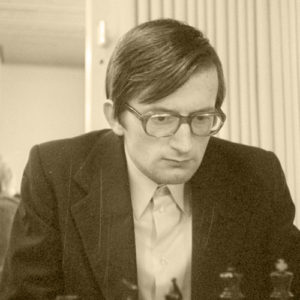
Adolf Albin
Adolf Albin tasted success in chess career fairly late. But he got to have this countergambit named after him after he famously played against Emmanuel Lasker in the 1893 tournament in New York.
Though not a relatively new position, the fact that it was used at such a high level against an emerging star Lasker to counter his Queen’s Gambit earned Albin and the opening countergambit widespread recognition and reputation. Although Albin lost the game, he stood second in this tournament behind Lasker who went on to win world championship a year later.
The beauty of this opening is a notable trap that exists after the usual 3. dxe5 d4- called Lasker’s Trap. If all goes as per plan, Black’s d-pawn can march its way into becoming a knight, and not a Queen!
As Albin, the unconventional man behind this unconventional move summarizes it “I chose to follow my own path into a variation which was regarded as wrong by the theory.”
Steinitz Variation

Steinitz
Unimpressive personality for a European Chess player and his diminutive mannerisms like hovering over the chess board Steinitz belonged to the Romantic Era of chess, and is considered to be one of the greatest thinkers in chess history.
Like his contemporaries, Steinitz started as a romantic where opponent’s aggressive and rapid targeting of the opponent’s king was a standard practice. In one tournament, Steinitz turned the theory over its head. Later on, his moves were collectively described as “scientific” or “positional” chess.
Accumulating gradual advantages while simultaneously working on positional weaknesses are the two corner stones of Steinitz variation too.
He theorized that all things being equal, the one who makes less mistakes should be the winner. This new approach to the game enabled him to continue his winning streak for over 25 matches in a row.
Some may argue that in the era of slashing your way to victory, a conservative, prophylactic Steinitz was suggesting “cowardly chess”. However, Steinitz was declared the first universally acknowledged and recognized World Chess Champion in 1886 after he defeated Zukertort.
Chigorin Defense

Mikhail Chigorin
You may have come across Mikhail Chigorin’s name for the famous 1892 blunder in a match against Steinitz that cost him the game as well as his reputation. But there was a time when Chigorin was regarded as best player in Russia in 1880s and 1890s. His arch-nemesis was Steinitz and the two sparred on many occasions, including the infamous two move checkmate that Chigorin handed over to Steinitz on a platter while the German was about to concede the game.
However, Chigorin recovered from the infamy and used the Chigorin defence 2… Nc6 against visiting American Harry Pillsbury and almost took him down by surprise factor.
The last of the breed of gambit players, Chigorin was known for his tactile and imaginative play.
Alapin’s Opening
The inventor of fictional chess games and puzzle series with characters named Attakinsky and Defendarov (got the drift yet?) Semyon Alapin may not have had a stellar chess career as a player, but as an author he is still a force to reckon with.
Alapin’s Sicilian is Alapin variation of Sicilian Defense, and almost all of the opening theory is sprinkled with Alapin’s variations. The offbeat opening has received its fair share of criticism and disdain as an obsolete opening, Alapin demonstrated how, memorizing chess moves is not ideal and you should learn to respond to your opponent’s moves.
Maróczy Bind
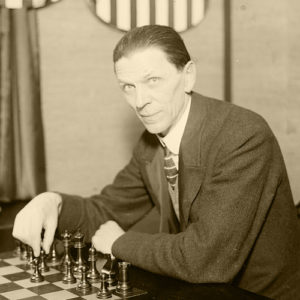
Géza Maróczy
Géza Maróczy was a simple-minded Hungarian who once threatened Emmanuel Lasker with his brilliant play. However, in his own country, he was regarded as “Réti red” and it agitated him so much that he challenged the reigning national champion 30 years his junior and beat him flat out 5-0.
Coming back to Maróczy Bind, for years, it was considered to be a neutralizing tactic for white against the Sicilian Defense.
More than an opening, it is a set-up, a trap to make it difficult for black to move and free up its cramped positions.
Tarrasch Defense
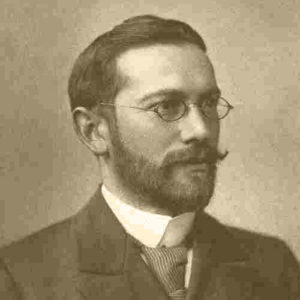
Siegbert Tarrasch
Siegbert Tarrasch was a practicing Doctor and a clever and shrewd chess player. His style resembled first World Champion Steinitz in many ways as like the master, Tarrasch preferred controlling the center and looking out for small gains to shape up a huge win.
His book Die Moderne Schachpartie (The Modern Chess Game) recommended 3….c5 as a possible move for declining the Queen’s Gambit. As a player, Tarrasch had a way of asserting his intellectual superiority with his mannerisms, dealing the final blow through psychological tactics, and this move surely reflects his confident but condescending manner towards his opponent. He was a staunch critic of the Hypermodern school of Chess. His verbal duels with Aaron Nimzowitsch are as famous as his matches against the hypermodern specialist.
He famously told Emmanuel Lasker on being introduced to the legend: “To you Mr. Lasker, I have only three words, check and mate.”
That the maestro had the last laugh over the braggart Tarrasch is story for another day!
Rubinstein Variation
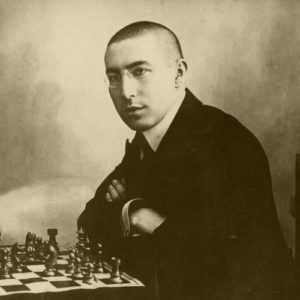
Akiba Rubinstein
One of the most well-respected players of the game, Akiba Rubinstein played and loved chess only for the sake of his devotion to it. He could never aim for material gain or game via his brilliant game. This opening is a variation of French Defense and it clearly demonstrates Rubinstein’s amazing foresight.
Everyone knows how he was the master of Endgame strategies. He would select openings with the endgames in mind, and that’s what makes him so unique. He was way ahead of his time, as is revealed later through this statement made by GM Boris Gelfand decades later, “Most of the modern openings are based on Rubinstein.”
A 1995 book give him the moniker “The Uncrowned King”, a true tribute to a selfless chess genius.
Alekhine’s Defense

Alexander Alekhine
An unorthodox character even by chess standards, Alexander Alekhine’s complete persona is reflected in this opening strategy named after him.
The Alekhine’s Defence seems impossible to achieve any material advantage at first. But Alekhine proved everyone wrong by opening with this move against one formidable opponent after another. Alekhine’s defense broke two of the opening theories most important principles- “don’t move your pieces more than once while opening” and “take control of the center”
Even after years of analysis, it is unclear which player this move and its countermoves give advantage to. In the end, the player who has a single-minded work ethic like the Maestro himself, will emerge a winner.
Grunfeld Defense
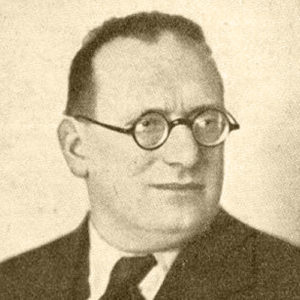
Ernst Grünfeld
Ernst Grünfeld was a hard-working chess player, and this move is aptly named after him. The Grunfeld Defense is a hypermodern opening and Alekhine was forced to throw his king across the room in frustration after he lost to Grunfeld in a match where the latter opened with his signature opening move.
Réti Opening
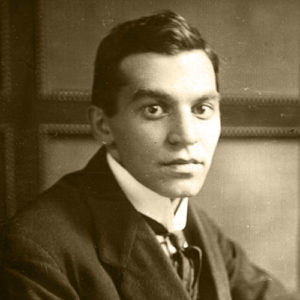
Richard Réti
Réti was one of the most vociferous hyper modernist voices that challenged Tarrasch and Steinitz who stressed on occupying the center first. Réti and other hyper modern chess followers proposed that pawn developed and opening through flanks had more chances of success.
Aspiring chess masters still swear by Réti ’s book on the topic- Modern Ideas in Chess. The Réti Opening became popular when Réti used moves similar (not exactly as the above) against Capablanca to hand in first loss in eight years at the 1924 New York tournament.
If Black captures 2…. dxc4, then white has a chance to control the center 3.e4. Réti suffered several losses before he was regarded as one of the foremost chess players of his time. He has several puzzles to his credit as well. All openings with white from Nf3 and c4 in his time came to be known as Réti!
Nimzowitsch Defense

Aron Nimzowitsch
Smarted by Tarrasch’s scathing remark “Never in my life have I had such a won game after 10 moves as I have now!”, hyper modernist Nimzowitsch wowed to change the traditional “positional” chess.
Playing a knight out on the first move was not just innovative, it was blasphemy in the times Nimzowitsch launched his campaign against traditionalists who believed openings were all about symmetrical pawn formations. One of his favorite middlegame tactic was to frustrate the opponent into making a mistake while overprotecting his position.
Najdorf Variation
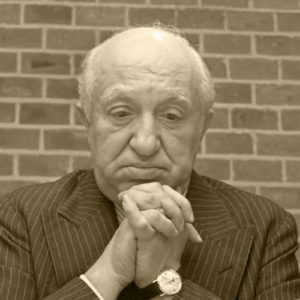
Miguel Najdorf
Polish Najdorf knew the importance of being at the right place at the right time, having survived a certain death at the hands of the Nazis while he was away in Argentina, playing a chess tournament and decided to stay put. His family was not as lucky. Nevertheless, Najdorf surged ahead through 1950s and 1960s as an Argentine citizen, and was considered to be one of the most formidable players of his time.
He pioneered his Najdorf variation of the Sicilian Defense throughout his clear in Post WW II era. The 5. …a6 may look like a harmless move, but it is one of the trickiest traps for the white in chess history. White’s knight can not land on b5 while black has not just one but two possible pawn breaks in b5 and e5.
A reflection on his own life struck with calamities and war, this variation is a poignant reminder of the life and times of the great master, and of how continuing down the path fraught with complications arising due to the same could be overcome only with your ability and knack for precision.
Pirc Defense
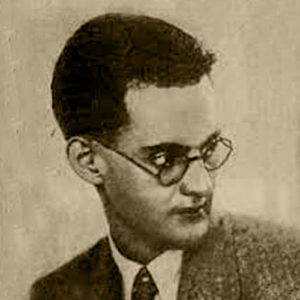
Vasja Pirc
Pirc (pronounced “Peerts” and not “Pirk”) was an Austro-Hungarian who became a Yugoslavian when the nation was born (now the region is in Slovenia).
The beauty of the Pirc Defense is that it was around 1800s but was considered “irregular” an absolute insult that was reserved for moves like 1.b4 and 1.g4.
Despite the infamous tag, Pirc saw some merit in the opening move since White was able to control the center and Black moved in from the sides, allowing Black a chance to stay on and may be even win the game.
In fact, the final stamp of approval came in the form of legendary Bobby Fischer taking it up during game 17 of the 1972 world championship against Boris Spassky. Although the game was drawn, it gave enough fodder for chess players around the world to chew on.
Torre Attack

Carlos Torre
Sometimes, in chess, a single game is enough the catapult the player into everlasting fame. The little known 20-year-old Mexican, Carlos Torre Repetto defeated the formidable Emmanuel Lasker with these 3 moves.
Such was his legacy that he was declared a GM 50 years after this game.
Grob’s Attack

Henri Grob
Remember how in one of the previous paragraphs, we have called the 1800 chess purists hurling the insult “irregular” at this g4?
Well, chess is surely a game of contradictions, where one man’s disdain is another man’s manna from heaven.
Grob’s Attack is named after Henri Grob, a Swiss gentleman. Swiss are traditionally known to be conservative and play-by-the-rulebook people. This ostentatious, devil-may-care move where white aims at starting his flank as an opening was Grob’s way of thumbing up the stiff Swiss nose.
This move can lead up to several dynamic combinations early on leading to a sharp game.
Grob was often seen starting a game with this move in his correspondence chess with local newspaper readers. He has covered this move extensively. For those looking to unsettle the opponent with a seemingly “irregular” move, this could be beginning of a lifelong affair.
Larsen’s Opening

Bent Larsen
Remember how in one of the previous paragraphs, we have called the 1800 chess purists hurling the insult “irregular” at this g4?
Well, chess is surely a game of contradictions, where one man’s disdain is another man’s manna from heaven.
Grob’s Attack is named after Henri Grob, a Swiss gentleman. Swiss are traditionally known to be conservative and play-by-the-rulebook people. This ostentatious, devil-may-care move where white aims at starting his flank as an opening was Grob’s way of thumbing up the stiff Swiss nose.
This move can lead up to several dynamic combinations early on leading to a sharp game.
Grob was often seen starting a game with this move in his correspondence chess with local newspaper readers. He has covered this move extensively. For those looking to unsettle the opponent with a seemingly “irregular” move, this could be beginning of a lifelong affair.
Benko Gambit

Pal Benko
Benko was an 8 times winner or joint winner of the US Chess Championship, but he is also known for is his relinquishing his candidate tournament spot to Bobby Fischer, who went all the way and put America on the map of the chess history. The reason, Benko knew that Fischer had a better chance of bringing the chess glory to America than him.
Fischer didn’t prove him wrong, either, sweeping his way through 1970 (interzonal) 1971 (candidates) and 1972 (World Championship) one after the other. Benko’s Gambit relies on the similar chance theory of having a better player (read piece) out there as 3…. b5 pawn offers a promise of breaking up white’s pawn center.
Needless to say, Benko’s Gambit is a popular move for people who want to start by raising the chances of individual pieces making it to the big league and even bigger disruptors.
Fischer Defense

Bobby Fischer
Each Chess opening brings with itself the life, times, and history of that person after which it is named. Think of it as your connection with someone who played the very same move almost 400 years ago!
In the next series of openings, we aim to explore some more chess openings named after the places. Were they first played there? What makes them famous? What is the significance? All this and more, so please stay tuned!
King’s Gambit lost its thrown when the mercurial Bobby Fischer that black could assert its winning move if it accepts f4 pawn and moves on to deal 3…. d6 blow.
Playing in times when the matches were not just played between players, but nations and ideologies, the self-proclaimed “undefeated World Champion” still remains a mystery, but the glory and popularity he brought to the chess world still seem unparalleled.



